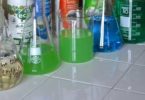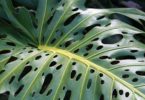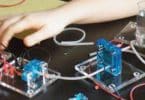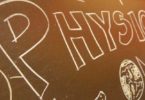Which of the following systems in man is affected by the bite of Cobra?
(a) Digestive
(b) Nervous
(c) Excretory
(d) Circulatory
Which of the following animals has the power of killing the snakes?
(a) Falcon
(b) Peacock
(c) Squirrel
(d) Pangolin
The study of snakes is called
(a) Ichthyology
(b) Enterology
(c) Serpentology
(d) Entomology
Which of the following is a poisonous snake?
(a) Eryx
(b) Natrix
(c) Dendrelaphis tristis
(d) Russel’s viper
The injection of serum of a horse that has been repeatedly injected with cobra venom into a person bitten by a cobra results in
(a) No immunity
(b) Natural immunity
(c) Active immunity
(d) Passive immunity
Related: Speed, distance time problems with answers
Snakes receive sound vibrations by
(a) Tympanum
(b) Body
(c) Internal ear
(d) Earth
Snake has
(a) Movalbe eyelids
(b) No eyelids
(c) Immovable eyelids
(d) Eyelids placed in pouches
A snake can be distinguished from a lizard by the absence of
(a) Limbs and tympanum
(b) Limbs and girdles
(c) Limbs, girdles and tympanum
(d) Limbs, girdles, tympanum and sternum
The poison glands of snakes are modified
(a) Sebaceous glands
(b) Ceruminous glands
(c) Salivary glands
(d) Endocrine glands
Related: World Independence Day questions
Large-sized scales fully extended from side to side on the belly are characteristics of
(a) Krait and sea snake
(b) Cobra and python
(c) Rat snake and Cobra
(d) Python and Krait
Which of the following is a non-poisonous viviparous snake?
(a) Ptyas
(b) Echiscarinots
(c) Uropeltis
The zoological name of the typical Indian Krait is
(a) Bungarus coeruleus
(b) Ophiopagus Hannah
(c) Viper russeli
(d) Naja naja
Teeth conducting poison in a snake are called
(a) Incisors
(b) Canines
(c) Heterodont
(d) Fangs
Related: Desert questions
the scientific name of King Cobra is
(a) Naja naja
(b) Bungarus coerulus
(c) Naja hunnah
(d) Vipera russelli
The snake has a head shield and an elongated hexagonal vertebral is
(a) Naja
(b) Eryx
(c) Bungarus
(d) Ptyas
The critical character of Cobra is
(a) Presence of hood
(b) Small scales on the head
(c) Rounded tail
Which is a poisonous snake?
(a) Enhydrina
(b) Typhlops
(c) Python
(d) Eryx
Related: Mountains of the world quiz
A pear-shaped head, sharply separated from the rest of the body and covered with tiny scales, is a feature of
(a) Pythons
(b) Vipers
(c) Kraits
(d) Cobras
The poisonous fangs of a snake are modified
(a) Mandible
(b) Maxillary teeth
(c) Canines
(d) Nasals
Snake molting consists of
(a) Epidermis
(b) Dermis
(c) Cornified cells
(d) Stratum germinativum
A stumpy laterally compressed tail is characteristic of
(a) Dendrelaphis tristis
(b) Sea-snake
(c) Rat-snake
(d) Rattlesnake
Related: Fish trivia questions and answers
The most poisonous is
(a) Krait
(b) Tree-snake
(c) Python
(d) Rat-snake
Which of the following is a marine snake?
(a) Enhydrina
(b) Typhlops
(c) Bungarus
(d) Naja
Which of the following snakes has hind legs?
(a) Python
(b) Bungarus
(c) Typhlops
(d) King Cobra
Related: Middle Ages Trivia Quiz
Typhlops is
(a) Sea-snake
(b) Grass-snake
(c) Glass-snake
(d) Blind-snake
Snake is an example of
(a) Primary Carnivores
(b) Secondary Carnivores
(c) Herbivores







Sawubona, bengifuna ukwazi intengo yakho.